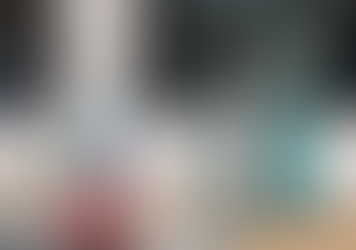ISA GENZKEN'S 'WASSERSPEIER AND ANGELS' AT HAUSER & WIRTH
- Arina Baburskova
- May 15, 2024
- 3 min read
From shimmering aluminium to dry tree branches, Genzken’s skilful blending of materials mirrors the way Gothic gargoyles combined animalistic and human characteristics. (...) Themes of juxtaposition and dichotomy permeate her oeuvres, contrasting elements of high and low culture, geometric and organic forms, everyday objects and fine art materials. writes Arina Baburskova.
As you enter the airy, geometric space of Hauser & Wirth, you will immediately find yourself within surrounded by a collage of bits and pieces of all sizes, materials and shapes. Scattered across the aluminium floor and walls, the works of Isa Genzken’s Wasserspeier and Angels are interlinked by tangled electrical wires akin to a mushroom mycelium, unafraid to take up the space. The gentle sun glow filters through the large glass windows, casting dynamic patterns of light and shadow activated by movement. As you slowly make your way around the room, the work envelopes you with a multitude of contrasts and details: ever-changing and acquiring new meanings with each new step, all coming together to create a captivating sensory experience.
Installation view courtesy of Hauser & Wirth London
Celebrated for her diverse artistic practices spanning across sculpture, photography, installation, film and painting, Isa Genzken (b. 1948) is a German multimedia artist who draws on legacies of the Constructivism movement mixed with Punk sensibilities. Her works, ranging from small, diorama-like sculptures to room-filling installations, skilfully operate in the realm of found objects and collage and redefine the assemblage of a new era.
Marking twenty years since it was originally displayed in Genzken’s first major solo exhibition in London, Wasserspeier and Angels originated as a response to the artist’s fascination with wasserspeier - literally 'water spitter' in English, referring to the intricately carved Gothic gargoyles adorning the Cologne Cathedral. First encountering these figures during their restoration in the cathedral’s masonry shop (and subsequent failed attempt to persuade the master builder to allow her to transport them to London), Genzken ended up creating her very own gargoyles for the 2004 exhibition at Hauser & Wirth.
Installation view courtesy of Hauser & Wirth London
Traditionally, these grotesque figures served a dual purpose: diverting rainwater from buildings and offering protection by symbolically confronting evil. Genzken brings them from rooftops down to the audience’s direct eye level and from the sacred mediaeval setting straight into the contemporary urbanscape. Her skilful blending of materials, from shimmering aluminium to dry tree branches, mirrors the way Gothic gargoyles combined animalistic and human characteristics. In this modern take, organic shapes merge with technology: two small eggs are nestled in electric sockets, transparent umbrellas seemingly broken by the stormy weather coexist beside a tall studio lamp, a crocodile’s head perched atop a disproportionately large wine glass. In fact, the themes of juxtaposition and dichotomy permeate Genzken’s oeuvre, contrasting the elements of high and low culture, geometric and organic forms, everyday objects and fine art materials.


Installation views courtesy of Hauser & Wirth London
Delving into the intersection between different artistic mediums and the socio-political and urban contexts they inhabit, Genzken often infuses her formal exploration with references to everyday experiences. Working in both Berlin and New York during the turn of the century, the artist bore witness to the Fall of the Berlin Wall as well as the World Trade Centre collapse - significant events that transformed the cities’ landscapes. Two decades ago Genzken’s inaugural London work embodied a discovery of a new visual language, characterised by its engagement with architectural forms and their social dimension, and today the installation feels just as fresh. Perhaps it reverberates even more than ever, layering up contemporary references and acquiring new meanings.
A kaleidoscope of diverse shapes and sizes, materials, and colours, Wasserspeier and Angels beckons you to pause and examine closely, to tilt your head or crouch down exploring every little detail and the symbolisms hidden within them. Imbuing her work with an unlimited sense of dynamism, Genzken urges you to abandon passive observation, and instead become an active part of the unfolding, ever-developing narrative of good and evil, secular and religious, traditional and modern.








